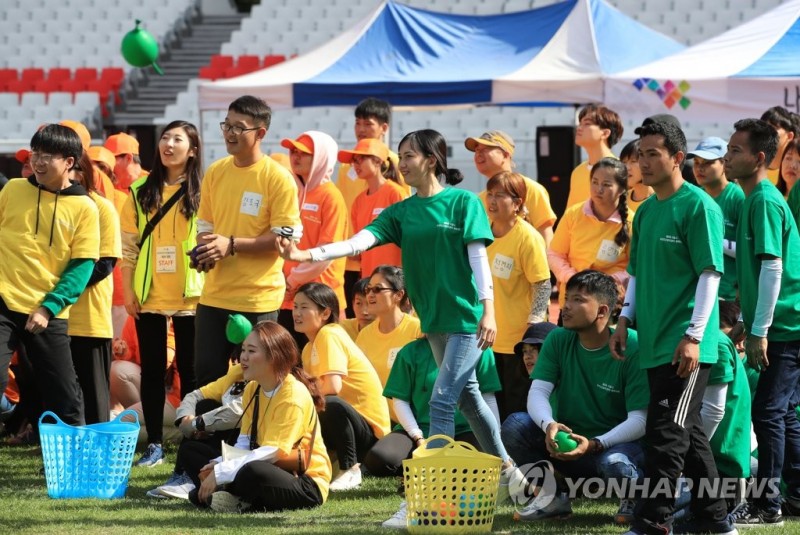
The decrease, not surprisingly, has been driven by the same factors experienced by Korean families. (image: Yonhap)
SEOUL, Dec. 6 (Korea Bizwire) — The birth rate for South Koreans married to foreigners is dropping.
Statistics Korea announced on Wednesday that the number of newborn babies from multicultural families last year amounted to 18,440, which was 5.1 percent fewer than the previous year.
After reaching a record high of 22,908 births in 2012, births among multicultural families have fallen. While 21,290 babies were born in 2013, this number dropped to 21,174 in 2014, 19,729 in 2015, and 19,431 in 2016.
Although the drop in the number of births from multicultural families was not as steep as the national decline of 11.9 percent, it still indicates that an increasing number of multicultural families are refraining from having children.
The decrease, not surprisingly, has been driven by the same factors experienced by Korean families.
The number of marriages has been decreasing, while maternal age at birth has been increasing. The number of multicultural marriages, which peaked at 35,098 in 2010, dropped to 21,709 in 2016.
Among Korean women who got married to foreigners last year, 27.7 percent were in their late 20s, 21.9 percent in their early 30s, and 18 percent in their early 20s.
Compared to 2015, the percentage of new brides in their late 20s dropped by 2.1 percent, but increased by 0.7 percent and 1.4 percent, respectively, for those in their early 30s and late 30s.
The share of foreigners or naturalized citizens in their early or late 20s married to Korean men dropped by 1.4 percent and 2.3 percent, respectively, while increasing by 1.4 percent and 1.5 percent for those in their early or late 30s, respectively.
The average maternal age of birth among multicultural families last year was 30.2 years, which was 2.5 years higher than in 2008.
First-born children comprised 53 percent of all children born into multicultural families. Second-born children accounted for 37.1 percent, while only 9.9 percent of births were for a third-born child or higher.
“When multicultural families began to increase in number in the early 2000s, first-born children used to comprise an absolute majority of all children born from multicultural families,” said a source from Statistics Korea.
“Now, the number of multicultural marriages is decreasing, while married households are gradually settling in, hence the increasing number of second and third-born children while first-borns are on the decrease.”
The source added that “multicultural births have surpassed 5 percent of the total number of births in the country for the very first time since 2008 when data on multicultural families was first collected.”
“This can be explained, however, by the sharp decrease in the total number of births in the country, raising the ratio of multicultural births which also decreased, but less sharply.”
H. M. Kang (hmkang@koreabizwire.com)






